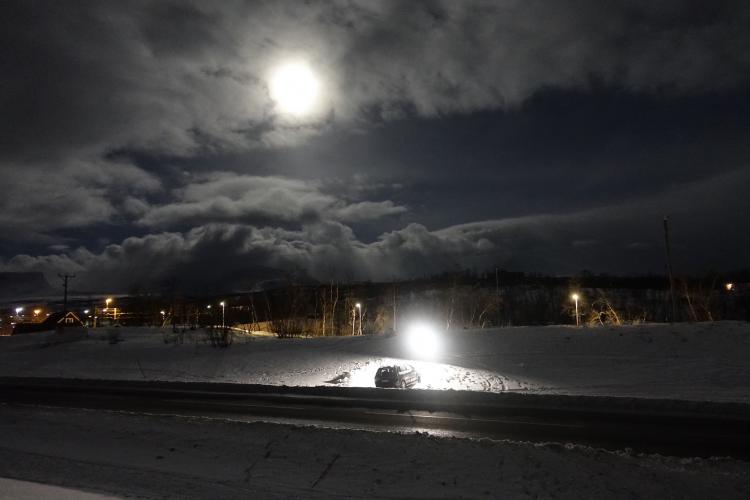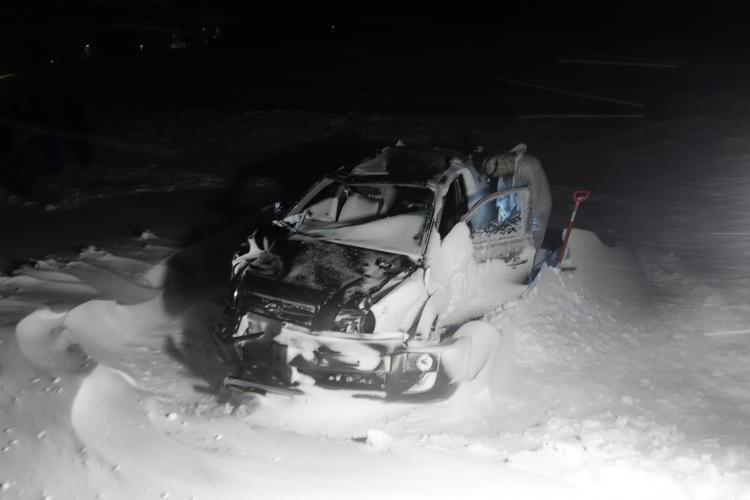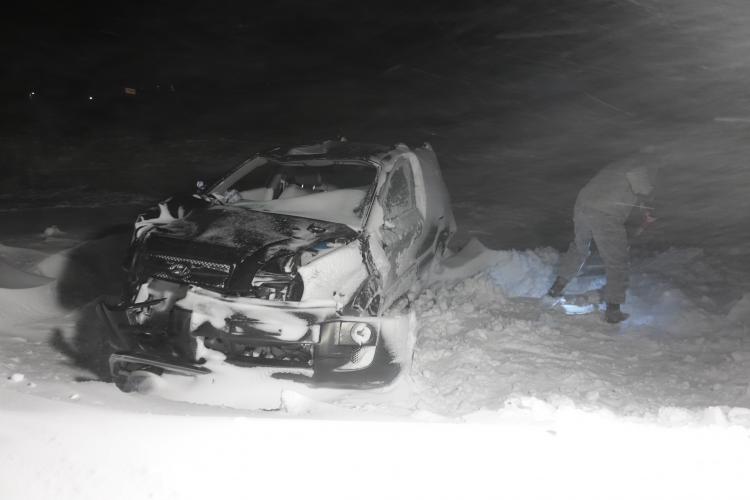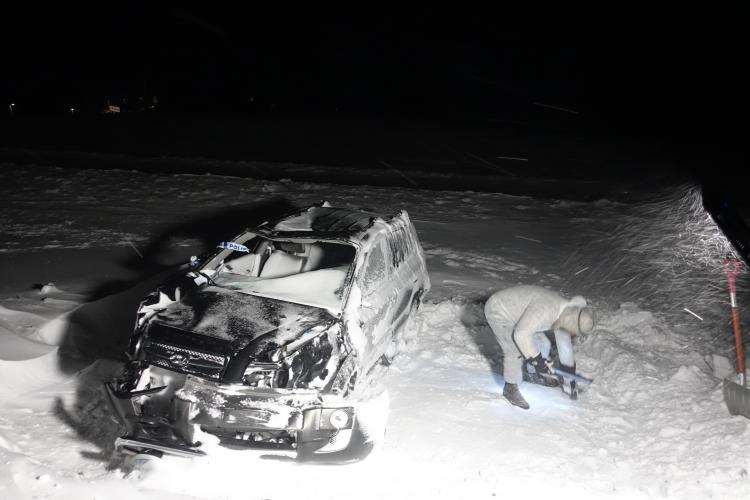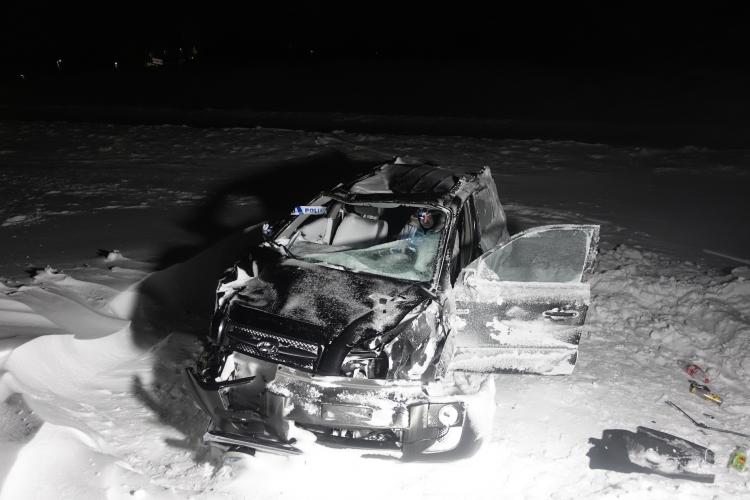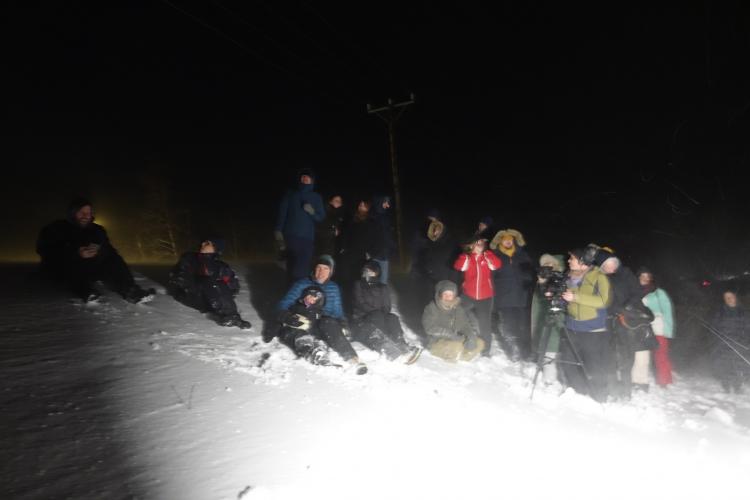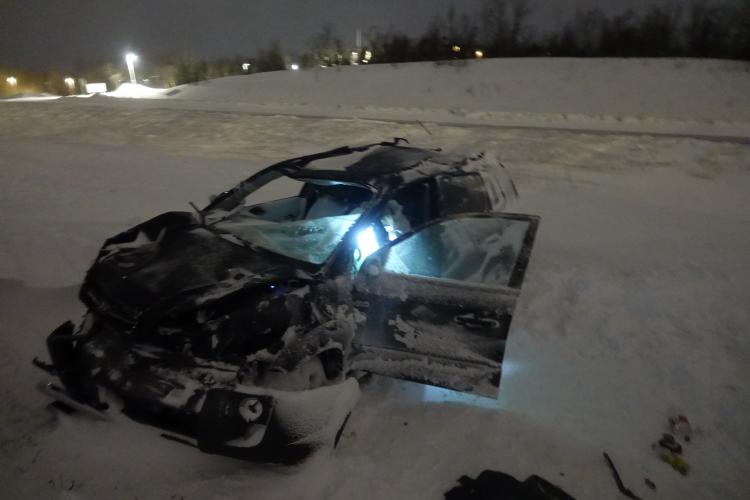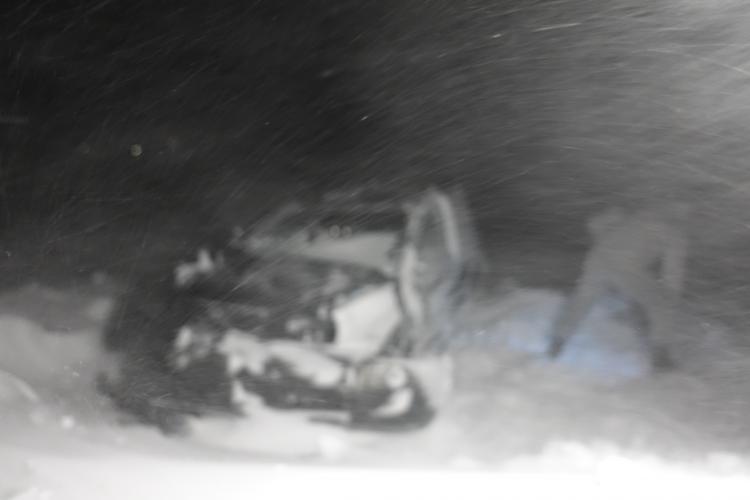Man disappears in the Anthrophocene, 2019
Archival Epson Ultra Dye Print, 60x90 cm, Edition of 3
The performance makes a reference to the nearby Climate Impact Research Center. A scientist in a white overall is investigating a crashed and stranded vehicle from the fossil fuel era.The car wreck stands as a symbol for technological progress that, as man-made climate change unfolds and accelerates, ultimately threatens to doom not only humankind, but all life on the planet. Max Frisch wrote in 'Der Mensch erscheint im Holozän' (Man in the Holocene, 1979): Katastrophen kennt allein der Mensch, sofern er sie überlebt; die Natur kennt keine Katastrophen: Only man knows catastrophes if he survives them; nature knows no disasters. Der Mensch verschwindet im Anthrophozän.
